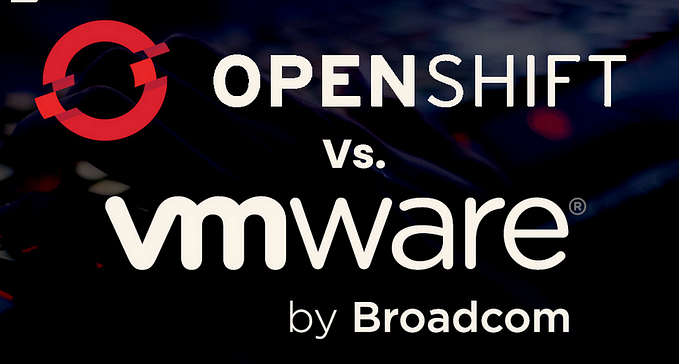OpenShift & Its Use Cases

OpenShift is a tool which is issued by RedHat, it is a Kubernetes container orchestrator based an open source container application platform which is really popular these days. We’ll also learn about its use cases.
So lets get this going…

OpenShift: An Introduction
OpenShift is a cloud development Platform as a Service (PaaS) developed by Red Hat. It is an open source development platform, which enables the developers to develop and deploy their applications on cloud infrastructure. It is very helpful in developing cloud-enabled services. This blog will help you understand OpenShift and what are its industrial use cases.
OpenShift can manage applications written in different languages, such as Ruby, Node.js, Java, Perl, and Python. One of the key features of OpenShift is extensible, which helps the users support the application written in other languages.

OpenShift helps organizations move their traditional application infrastructure and platform from physical, virtual mediums to the cloud.
OpenShift supports a huge variety of applications, quickly developed and deployed on the OpenShift cloud platform. OpenShift supports three kinds of platforms for developers and users.
Infrastructure as a Service (IaaS)
In this format, the service provider provides hardware-level virtual machines with some pre-defined virtual hardware configuration. There are multiple competitors in this space, starting from Rackspace, AWS Google Cloud, Rackspace, and many more.

The main drawback of having IaaS after a lengthy setup and investment procedure is that one is still responsible for installing and maintaining the operating system and server packages, managing the network of infrastructure, and taking care of the basic system administration.
Software as a Service (SaaS)
With SaaS, one has the least worry about the underlying infrastructure. It is as simple as plug and play, wherein the user has to sign up for the services and start using it.
The main drawback of this setup is that one can only perform a minimal amount of customization, which the service provider allows.

Gmail is the most common example of SaaS, where the user needs to login and start using it. The user can also make some minor modifications to his account. However, it is not very useful from the developer’s point of view.
Platform as a Service (PaaS)
It can be considered as a middle layer between SaaS and IaaS. PaaS evaluation’s primary target is for developers in which the development environment can be spin up with a few commands.
These environments are designed in such a way that they can satisfy all the development needs, right from having a web application server with a database.

The OpenShift Console has developer and administrator oriented views. Administrator views allow one to monitor the container resources, container health, manage users, work with operators, etc.
Advantages of OpenShift
Let’s look at the benefits of Openshift container platform.
1. Innovate and go to market faster
OpenShift enables your development team to focus on doing what they do best — designing and testing applications. When they are freed from spending excessive time managing and deploying containers, they can speed up the development process and get products to market more rapidly.
Consider the case of a company specializing in the design and sale of integrated circuits. The cycle of innovation in this industry is relentless; as new technologies arise, chipmakers who can most effectively design chips for these new uses will be the ones who gain market share. For example, the rapid rise of the smart phone has been a boon to companies that have designed chips to power it.

Orchestrating container usage via the OpenShift platform provides a marked efficiency advantage to chipmakers who utilize containers for the next-generation virtualization benefits they offer. Deploying an increased number of apps on existing system resources enables a chipmaker to provide its developers with an expanded toolset to increase their ability to innovate. In an industry where a chipmaker’s main products can become outdated — if not obsolete — within a year or less, the ability to innovate and bring a product to market rapidly is a significant competitive advantage.
2. Accelerate application development
Deploying and managing containers at scale is a complicated process. OpenShift enables efficient container orchestration, allowing rapid container provisioning, deploying, scaling, and management. The tool enhances the DevOps process by streamlining and automating the container management process. Cutting down on time that would otherwise be spent managing containers improves your company’s productivity and speeds up application development.

Accelerated application development is especially valuable in enterprises where a company’s IT system must accommodate rapidly evolving functions. An example of this is the cybersecurity industry. Companies in this industry face an arms race against hackers, who are continually looking for software flaws to exploit. When an exploit is found, cybersecurity firms are expected to respond with fixes as rapidly as possible — often in days, if not hours.
If the development team at such a firm is delayed by container management issues, it can mean missing out on developing a timely fix; if this happens often enough, it can erode a company’s competitive position vis-à-vis its rivals. By streamlining and automating the container automation process, OpenShift enables cybersecurity developers to focus on accelerating application development, updates, and product distribution.
3. Enterprise-grade, container-based platform with no vendor lock-in
A company’s IT needs can vary greatly from one period to the next. Selecting a proprietary container management platform subjects you to the possibility that your vendor won’t be able to provide an acceptable solution if your company’s IT focus changes. In such cases, the expense and time involved in moving from a proprietary vendor to a new platform can be considerable.

Consider the case of a company with worldwide manufacturing facilities that implements a proprietary container platform tool. If the company shifts its production approach to a process that requires it to change to a new operating system — one that isn’t supported by its containerization platform — the company will face the expensive task of redoing its containerization orchestration on another platform.
With a vendor-agnostic open source platform, users can migrate their container processes to the new operating system quickly — while avoiding the extensive costs often involved in migrating from a proprietary operating framework.
4. Enable DevOps and department-wide collaboration
The DevOps process relies upon transparent communication between all involved parties. Containerization provides a convenient means of enabling your IT operations staff to test instances of a new app. OpenShift assists this process by making it easy to test apps throughout your IT architecture without being impeded by framework conflicts, deployment issues, or language discrepancies.

One industry that can benefit from OpenShift’s enablement of enhanced DevOps processes is the webhosting and development field. Companies competing in this industry are constantly racing to offer their customers enhanced functionality. For instance, as web commerce increases by leaps and bounds, companies and individuals progressively look to sell their products over the web. They can do this by adding web sales functionality to their own sites via widgets designed for this purpose, or by purchasing sites with built-in sales functionality.
A company operating in this field, which requires constantly updated functionality to stay competitive, needs to empower its employees to design and test applications as rapidly and effectively as possible. By enabling developer and operations staff to collaborate efficiently, OpenShift allows web hosting and design companies to link developers and operations staff together to effectively design, test, and deploy applications.
5. Self-service provisioning
Assembling the proper tools to create applications on your system architecture can be a challenge, especially at the enterprise level. OpenShift makes the process easy by allowing for the integration of the tools you use most across your entire operating environment.
This self-service provisioning helps improve developer productivity by allowing your development team to work with the tools they are most comfortable using — speeding up the development process by enabling faster creation and deployment of applications. At the same time, OpenShift allows your operations staff to retain control over the environment as a whole.

Examples of how this feature benefits users can be seen in companies where the development staff must be fluent in a variety of development tools and languages. For instance, a video game development company can benefit from this feature when they need to develop games that are compatible with a variety of operating systems. OpenShift enables the game developer’s programmers to use their favorite tools while developing games for different systems. This results in effective container usage, without forcing the company’s developers to use tools they aren’t familiar with.
Industrial Use Cases
We’ll see Industrial Use Cases through various success stories of reknowned customers of the OpenShift.
1. Porsche Informatik

Porsche Informatik, IT service provider for the Volkswagen Group, needed to speed application development and delivery to stay competitive in a fast-paced global market. The organization used Red Hat® OpenShift® to create a private cloud container environment. Porsche Informatik’s developers can now take advantage of self-service capabilities, and teams across the organization can work together more effectively with a DevOps approach supporting continuous integration and delivery (CI/CD) workflows. As a result, Porsche Informatik has cut development time from weeks to hours and created a solid foundation to stay ahead of competition.
2. Ford

Ford Motor Company seeks to provide mobility solutions at accessible prices to its customers, including dealerships and parts distributors who sell to a variety of retail and commercial consumers. To speed delivery and simplify maintenance, the company sought to create a container-based application platform to modernize its legacy stateful applications and optimize its hardware use. With this platform, based on Red Hat OpenShift and supported by Red Hat and Sysdig technology, Ford has improved developer productivity, enhanced its security and compliance approach, and optimized its hardware use to improve operating costs. Now, the company can focus on exploring new ways to innovate, from big data to machine learning and artificial intelligence.
3. Boehringer Ingelheim

Boehringer Ingelheim, one of the pharmaceutical industry’s top 20 companies, sought to bring new, digital services to its customers in line with industry changes, such as telehealth, electronic health records (EHRs), and more. To support faster, more responsive development while remaining compliant with industry regulations, the company adopted Red Hat OpenShift, an enterprise container platform. Combining Red Hat OpenShift with continuous delivery (CD), Boehringer Ingelheim has achieved 5 times faster delivery to the market, enhanced scalability and management with automation, and improved its talent acquisition with enterprise open source success.
Companies using OpenShift
Red Hat OpenShift is a tool in the Platform as a Service category of a tech stack.
Red Hat OpenShift is an open source tool with 901 GitHub stars and 553 GitHub forks. Here’s a link to Red Hat OpenShift’s open source repository on GitHub.
Here are few companies using OpenShift
- Accenture
- Walls.io
- Ericcson
- Runtastic
- Proshore

Thanks for Reading! :)
Connect with me on LinkedIn by clicking here!










